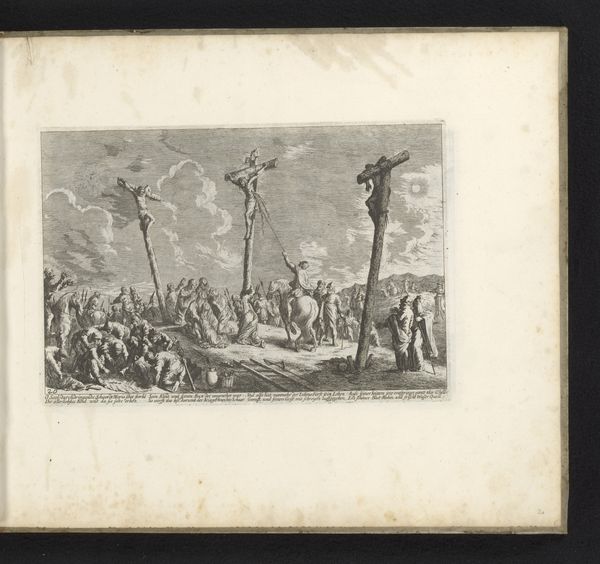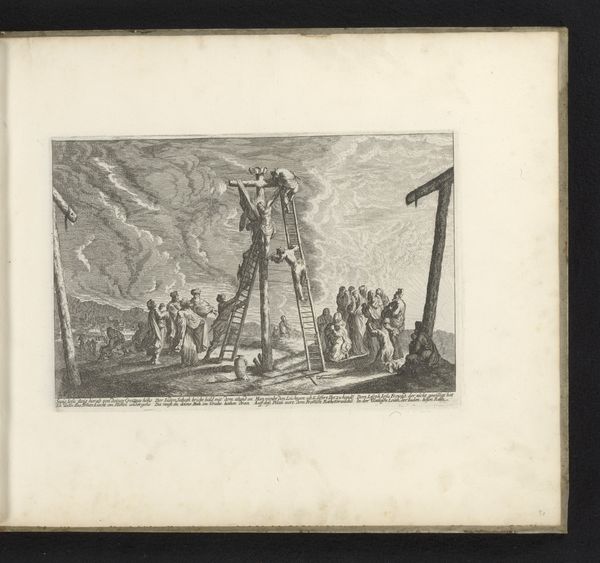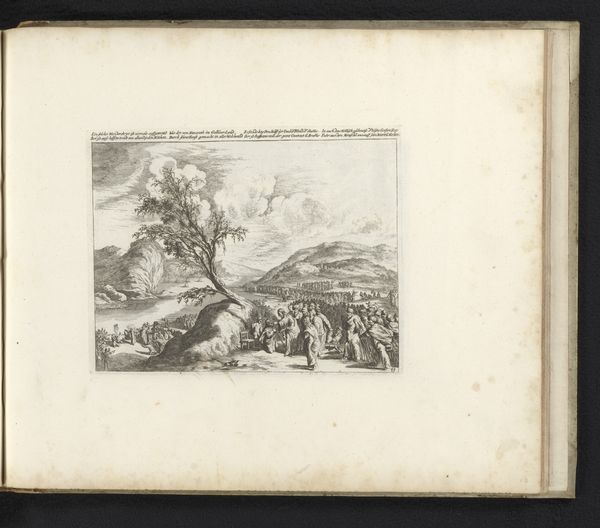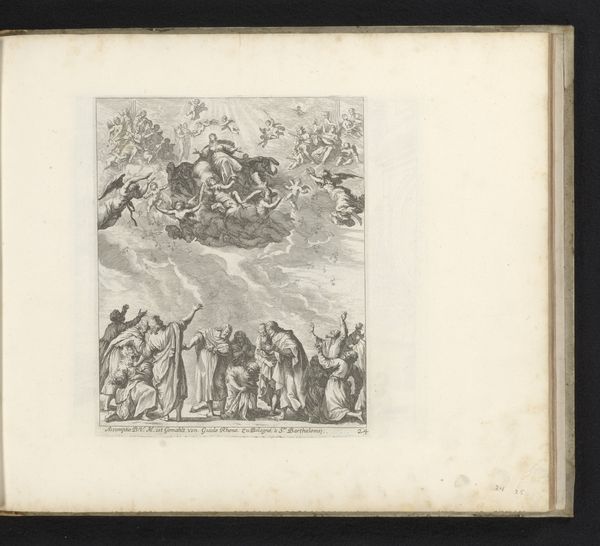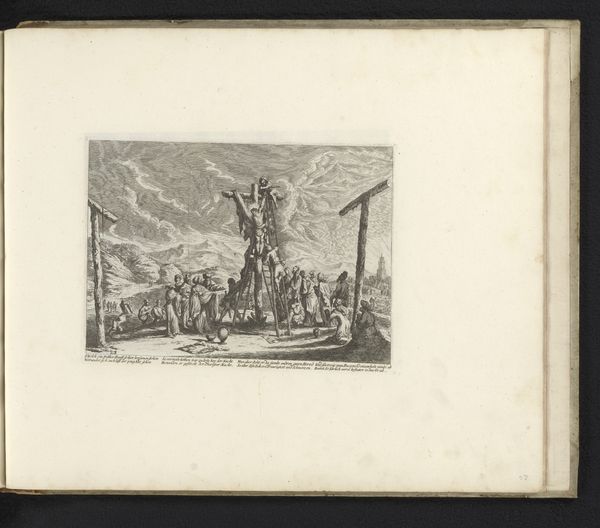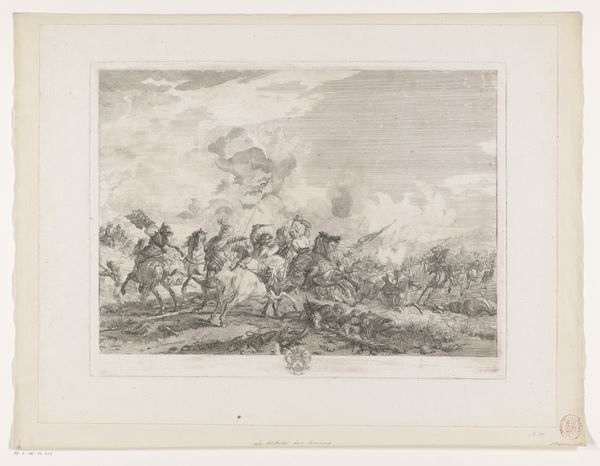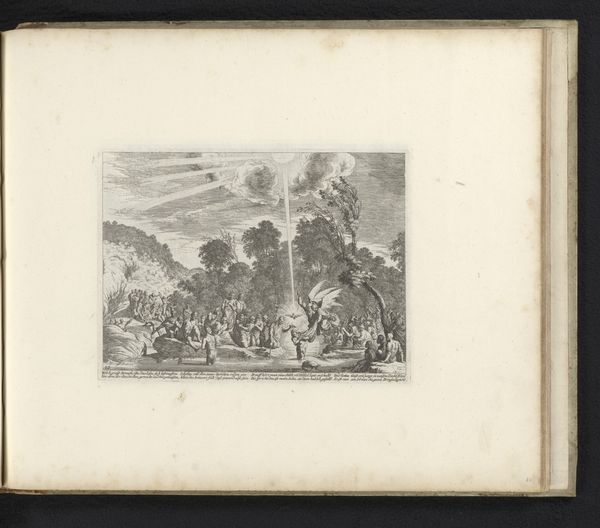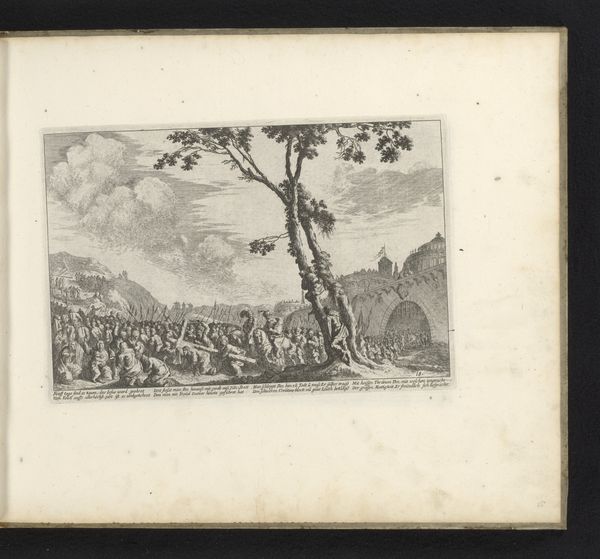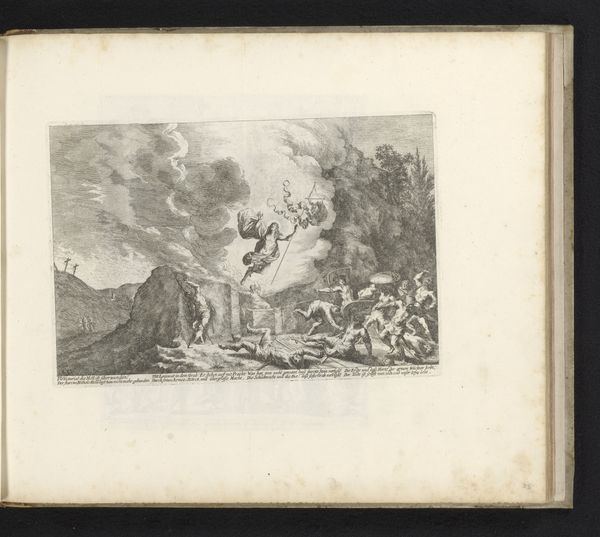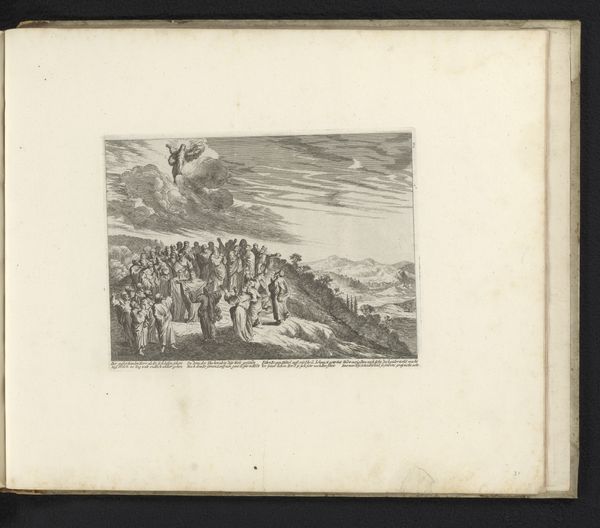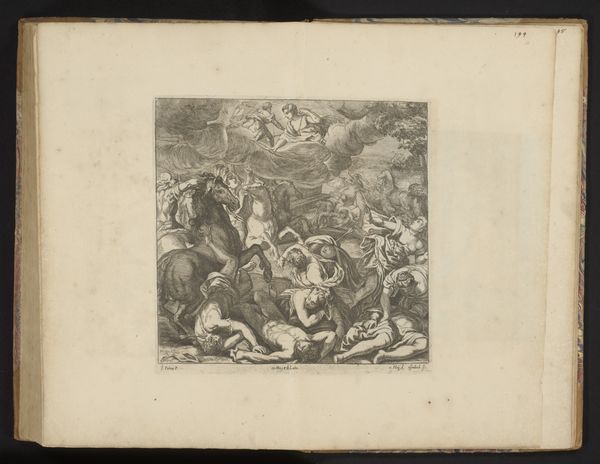
print, engraving
#
narrative-art
#
baroque
#
ink paper printed
# print
#
figuration
#
history-painting
#
engraving
Dimensions: height 175 mm, width 254 mm
Copyright: Rijks Museum: Open Domain
Editor: We’re looking at “Kruisoprichting” or “Raising of the Cross”, an engraving by Melchior Küsel, made sometime between 1670 and 1682. The print depicts a crowd of people erecting two crosses. I'm struck by how the bright sky contrasts with the grim scene below. What draws your eye in this piece? Curator: I am immediately drawn to the stark composition. Note how the artist has structured the scene using diagonal lines created by the raising of the crosses and the bodies straining to lift them. It cleverly creates a sense of dynamic tension across the entire surface of the work. Consider also the layering. The crowd occupies the middle ground, positioned between the immediate foreground of tools and fallen bodies and the background dominated by a sky. It's a strategic arrangement of depth, wouldn't you agree? Editor: Yes, absolutely. I didn't initially think about the fallen figures as a compositional element. The engraving medium itself contributes, right, with those sharp lines enhancing the drama? Curator: Precisely. The precision of the engraved line defines the figures. Küsel harnesses the stark contrast between black and white to emphasize the physicality of the scene, creating a sense of struggle and exertion. How do you think the medium and composition impact the narrative of the work? Editor: That's a great question! I hadn't thought about how the medium contributes to the storytelling. Considering the formal qualities certainly illuminates its meaning. Thanks! Curator: Indeed, focusing on form refines our perspective, doesn't it?
Comments
No comments
Be the first to comment and join the conversation on the ultimate creative platform.
